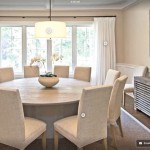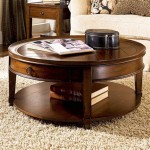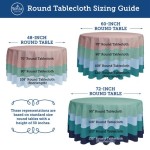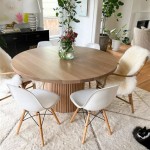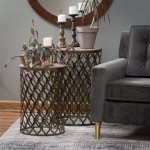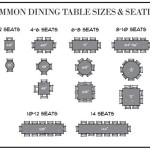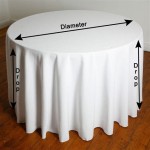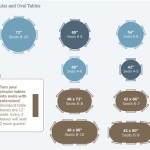Who Sits At The Head Table For A Wedding?
The head table at a wedding serves as a focal point, a place of honor for those closest to the couple. Deciding who occupies these coveted seats requires careful consideration of family dynamics, relationships, and the overall tone the couple wishes to set for their celebration. The traditional arrangement has evolved over time, and modern couples often adapt the seating to best reflect their unique circumstances. Understanding the common configurations and the rationale behind them can help navigate this important planning decision.
The primary function of the head table is to acknowledge and celebrate the key individuals who have supported the couple. It is traditionally located in a prominent position in the reception venue, allowing the honored guests to be easily seen and appreciated by all attendees. A well-planned head table arrangement contributes to the overall atmosphere of the wedding, signaling the importance of family and friendship.
Traditional Head Table Arrangement
The most traditional head table arrangement typically includes the bride and groom, their respective parents, and the wedding party, including the maid of honor and best man. The specific seating order within this arrangement often follows a set protocol rooted in etiquette and historical precedent. Understanding this traditional setup provides a foundation for making informed decisions, even if the couple chooses to deviate from it.
Traditionally, the bride and groom occupy the center seats at the head table. The bride usually sits to the right of the groom. This arrangement allows them to be the focal point of the table and easily accessible to each other throughout the reception. The best man typically sits to the bride’s right, and the maid of honor sits to the groom’s left. This places the two individuals who are responsible for supporting the couple throughout the wedding day in close proximity to them.
The parents of the bride and groom are traditionally seated next to the maid of honor and best man. If both sets of parents are present and amicable, the bride’s mother typically sits to the groom’s left (next to the maid of honor), and the bride’s father sits next to her. On the groom’s side, the groom’s mother sits to the bride’s right (next to the best man), and the groom’s father sits next to her. This places the parents in a position of honor, visibly acknowledging their vital role in the couple’s lives.
Remaining members of the wedding party, such as bridesmaids and groomsmen, are seated alternately along the rest of the head table. The order is generally determined by their seniority within the wedding party or their relationship to the bride and groom. The goal is to create a balanced and visually appealing arrangement. If space is limited or the wedding party is large, some members may be seated at adjacent tables rather than extending the head table to an unwieldy length.
One crucial consideration in the traditional arrangement is the marital status and relationships of the parents. If the parents are divorced, the seating arrangement can become more complex. It is generally recommended to seat each parent with a significant other or with other family members who are close to them, rather than forcing them to sit next to each other if there is any animosity. Open communication and sensitivity are essential when dealing with divorced parents to ensure everyone feels comfortable and respected.
Alternative Head Table Configurations
While the traditional head table arrangement provides a starting point, many couples choose to modify it to better suit their individual circumstances and preferences. Several alternative configurations have gained popularity, offering flexibility and allowing for more personalized seating arrangements. These alternatives can address issues such as blended families, large wedding parties, or a desire for a more intimate setting.
One common alternative is the "sweetheart table," which consists of just the bride and groom. This arrangement allows the couple to enjoy some quality time together during the reception and provides a more intimate setting. The rest of the wedding party and parents can then be seated at separate tables with their spouses or significant others, allowing them to interact more freely with other guests. This option is particularly appealing for couples who want to minimize potential family drama or who simply prefer to focus on each other.
Another popular alternative is to include only the wedding party at the head table, excluding the parents. This arrangement is often chosen when the couple wants to create a more casual and fun atmosphere. The parents can then be seated at their own table with close family members or friends, allowing them to mingle and enjoy the reception in a more relaxed setting. If the parents are seated separately, it is important to ensure they are seated at prominent tables and given special recognition to show them respect and appreciation.
A variation of the traditional head table involves including spouses or significant others of the wedding party. This can create a more inclusive atmosphere and prevent any feelings of isolation among the partners of the bridesmaids and groomsmen. However, this option may require a larger table or multiple tables to accommodate everyone comfortably. If space is limited, couples may choose to include only the spouses or significant others of those in the wedding party who have been in long-term relationships.
For couples with blended families, the head table arrangement can be particularly complex. It is crucial to be sensitive to the feelings of all involved and to create a seating arrangement that is fair and respectful. One option is to seat stepparents at the head table alongside the biological parents. Another option is to seat the stepparents at a separate table with other family members or friends, ensuring they are given prominent placement and recognition. Open communication with all parents is essential to ensure everyone feels comfortable and valued.
Factors To Consider When Planning The Head Table
Several factors should be considered when planning the head table arrangement to ensure it meets the needs and preferences of the couple and their honored guests. These factors include the size and layout of the venue, the number of people to be seated at the head table, the relationships between those individuals, and the overall atmosphere the couple wishes to create. Careful consideration of these factors will contribute to a successful and enjoyable reception.
The size and layout of the venue will significantly impact the options for the head table arrangement. A large ballroom may easily accommodate a long, traditional head table, while a smaller venue may require a more compact configuration, such as a sweetheart table or a smaller head table with only the wedding party. It is important to work with the venue to determine the best placement and size of the head table to ensure it is both visually appealing and functional.
The number of people to be seated at the head table is another critical factor. A large wedding party may require a very long table or multiple tables, which can be challenging to arrange and may detract from the overall aesthetic of the reception. In such cases, it may be necessary to consider alternative arrangements, such as seating only the immediate family or the bridal party at the head table, with the remaining guests at nearby tables.
The relationships between the individuals to be seated at the head table should also be carefully considered. If there are any strained relationships or potential conflicts, it is important to create a seating arrangement that minimizes the possibility of discomfort or tension. Open communication and sensitivity are essential in addressing these issues and ensuring everyone feels comfortable and respected. The goal is to create a positive and supportive atmosphere for the couple and their guests.
Finally, the overall atmosphere the couple wishes to create should be considered when planning the head table. A traditional head table may be appropriate for a formal and elegant wedding, while a sweetheart table or a smaller head table with only the wedding party may be more suitable for a casual and relaxed celebration. The head table arrangement should reflect the couple's personality and style and contribute to the overall ambiance of the reception.
In conclusion, the head table is a significant element of the wedding reception, and its arrangement requires careful planning and consideration. By understanding the traditional configurations, exploring alternative options, and considering the key factors involved, couples can create a seating arrangement that honors their loved ones, reflects their unique circumstances, and contributes to a memorable and enjoyable celebration.

Arranging Your Wedding Seating Plan And Top Table

Wedding Head Table Seating Who Gets A Spot

How To Seat The Bridal Table At Your Reception With Graphs Queensland Brides

Who Sits At The Head Table Wright House

Who Sits At The Head Table During Wedding Reception

Wedding Head Table Seating Who Gets A Spot

Who Sits At The Head Table Wedding Reception Weddings

Ask The Coordinators Head Table Dimensions Castle Farms

Wedding Etiquette Who Sits At The Bridal Table

Wedding Head Table Seating Who Gets A Spot
Related Posts

